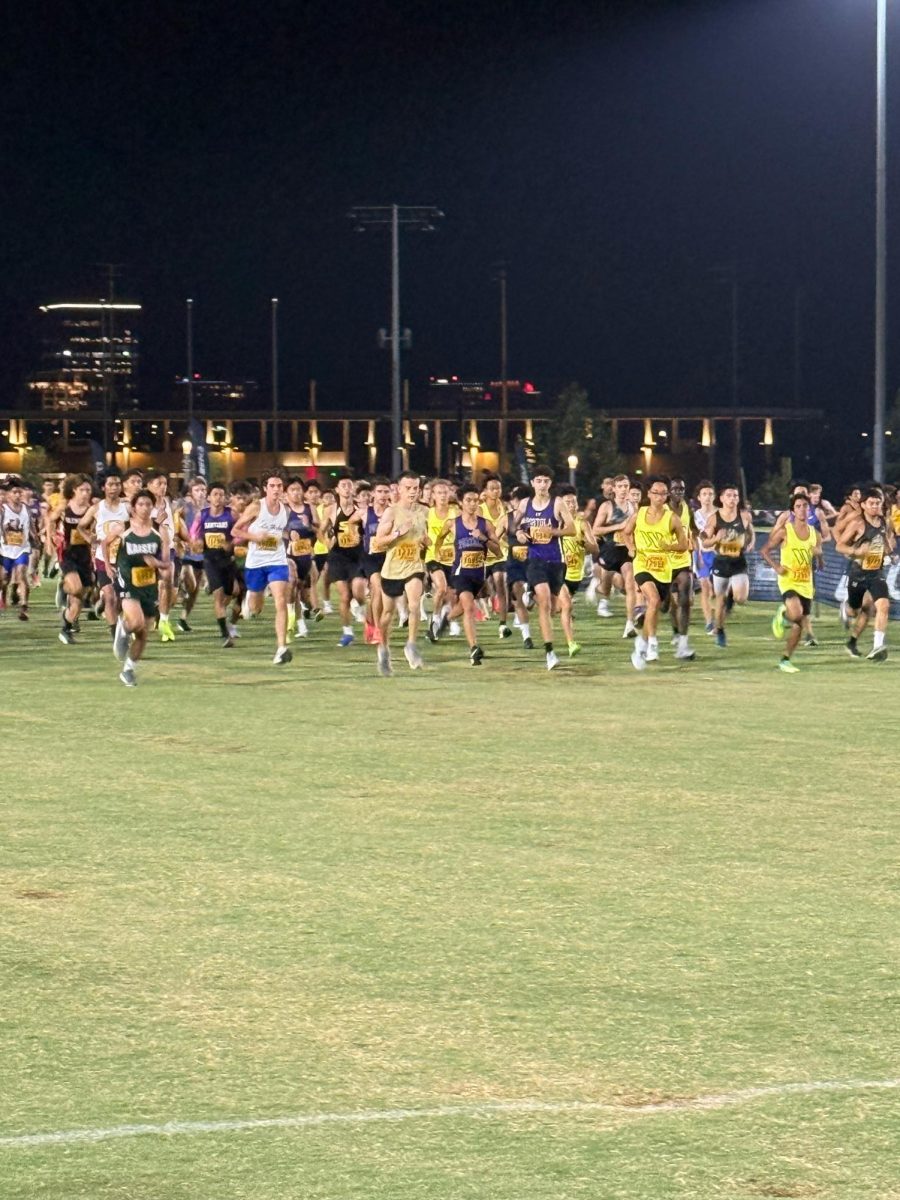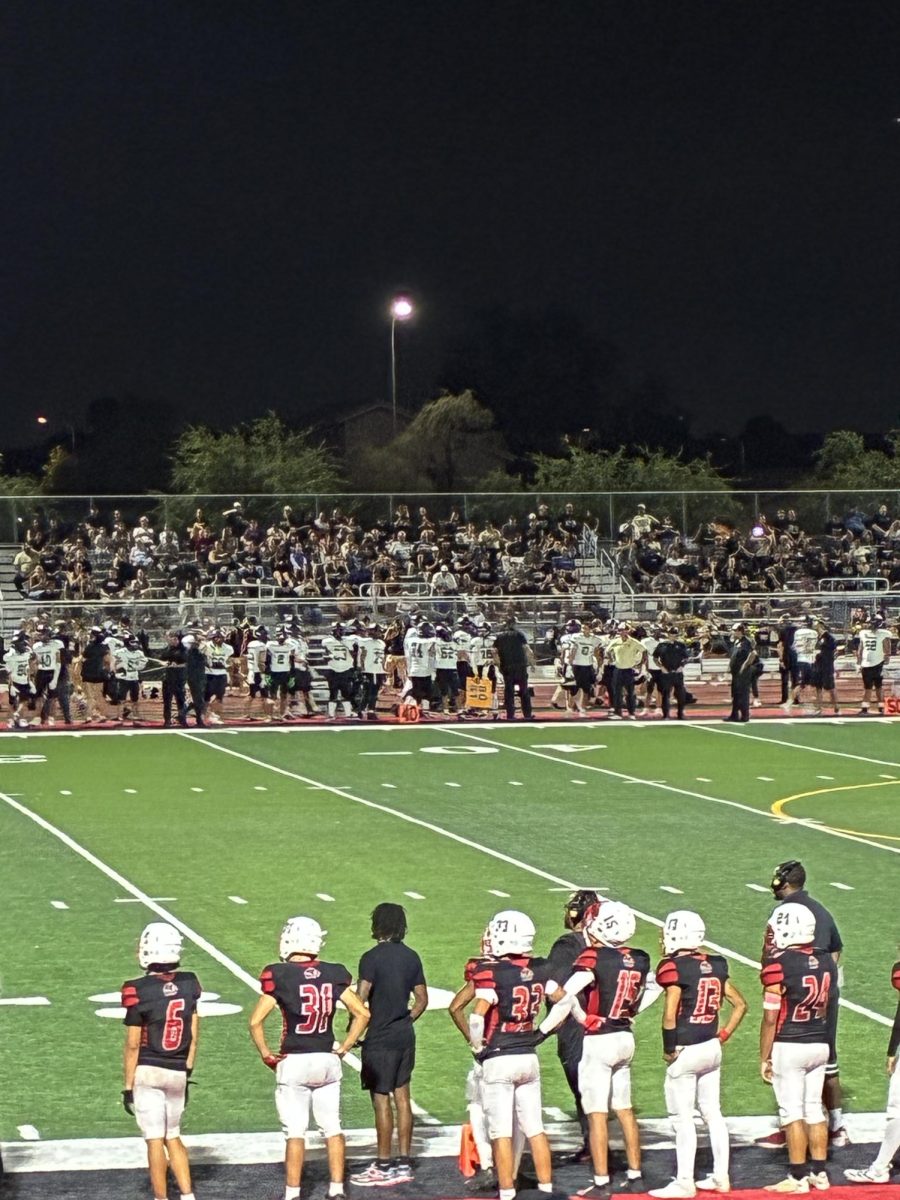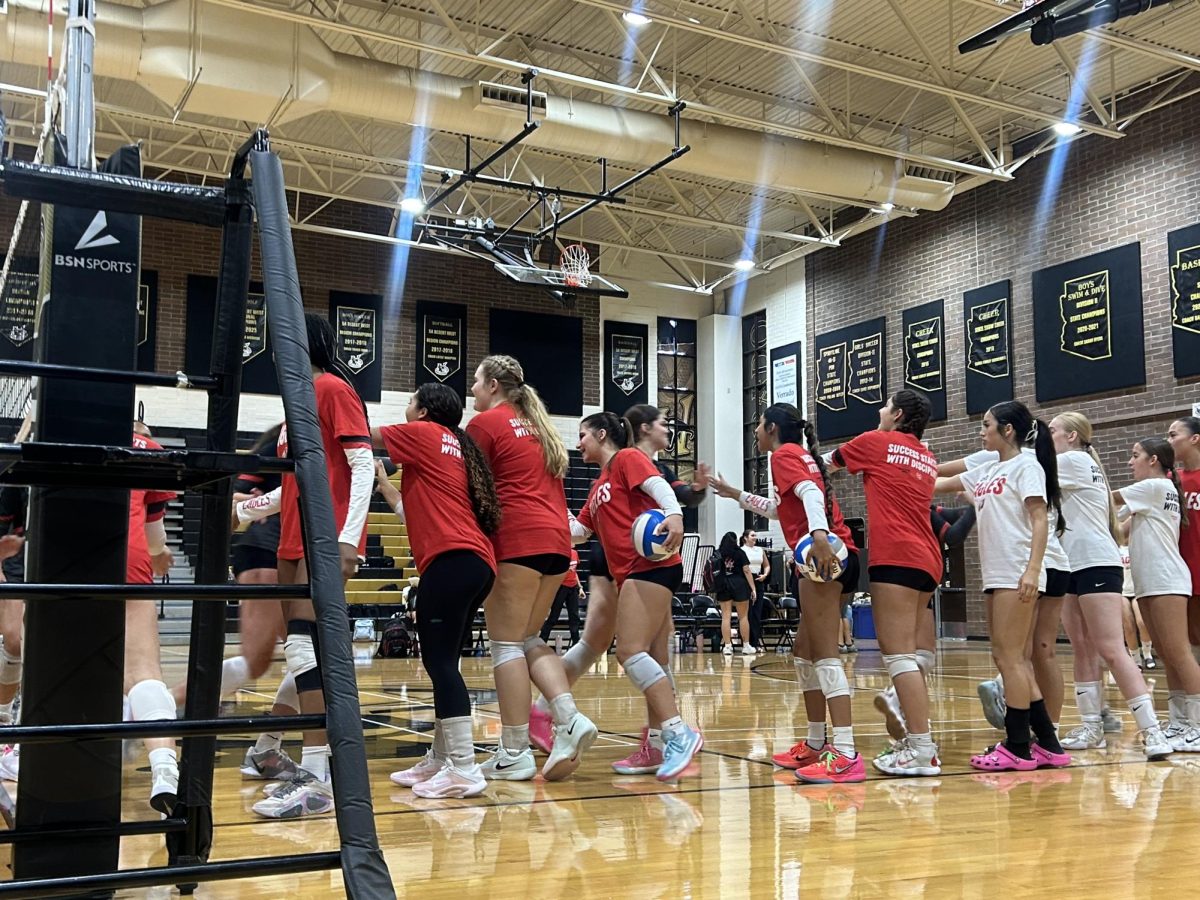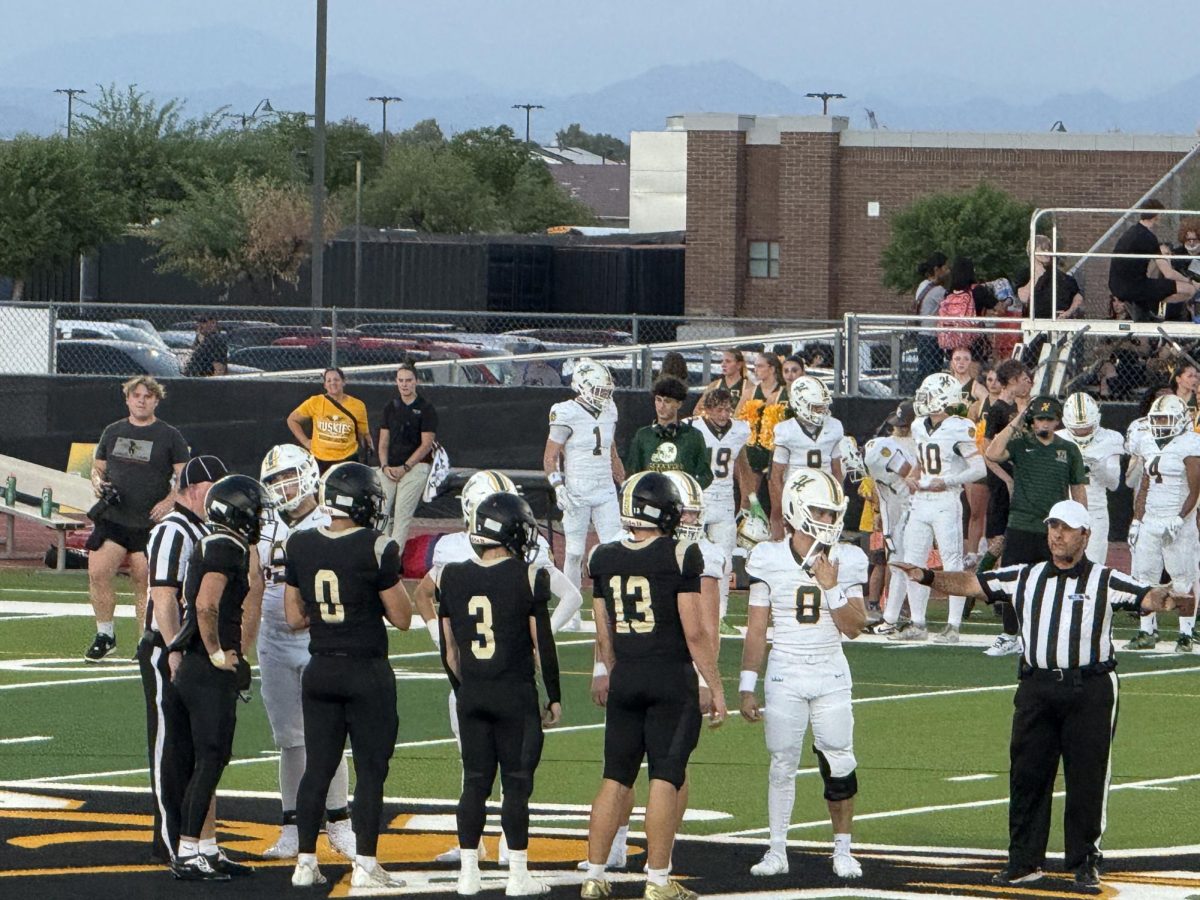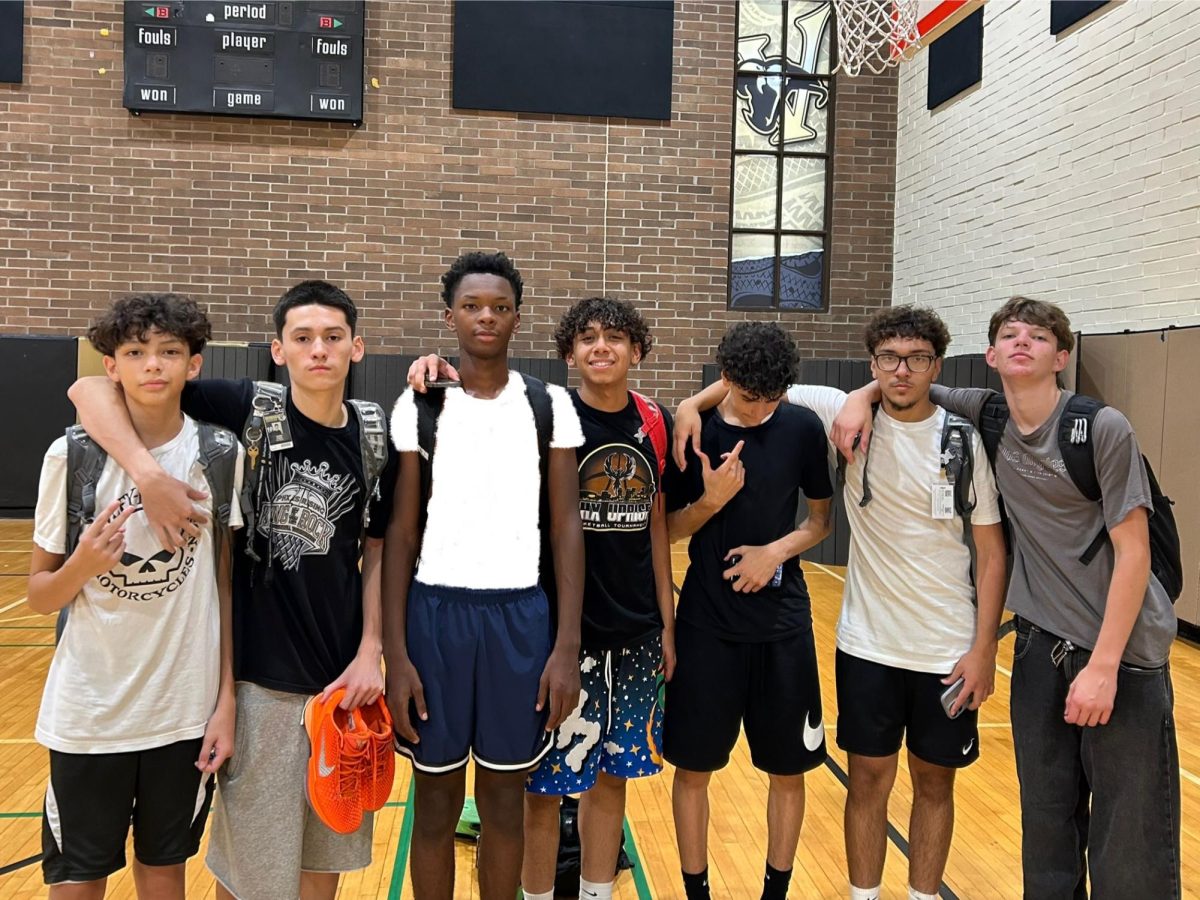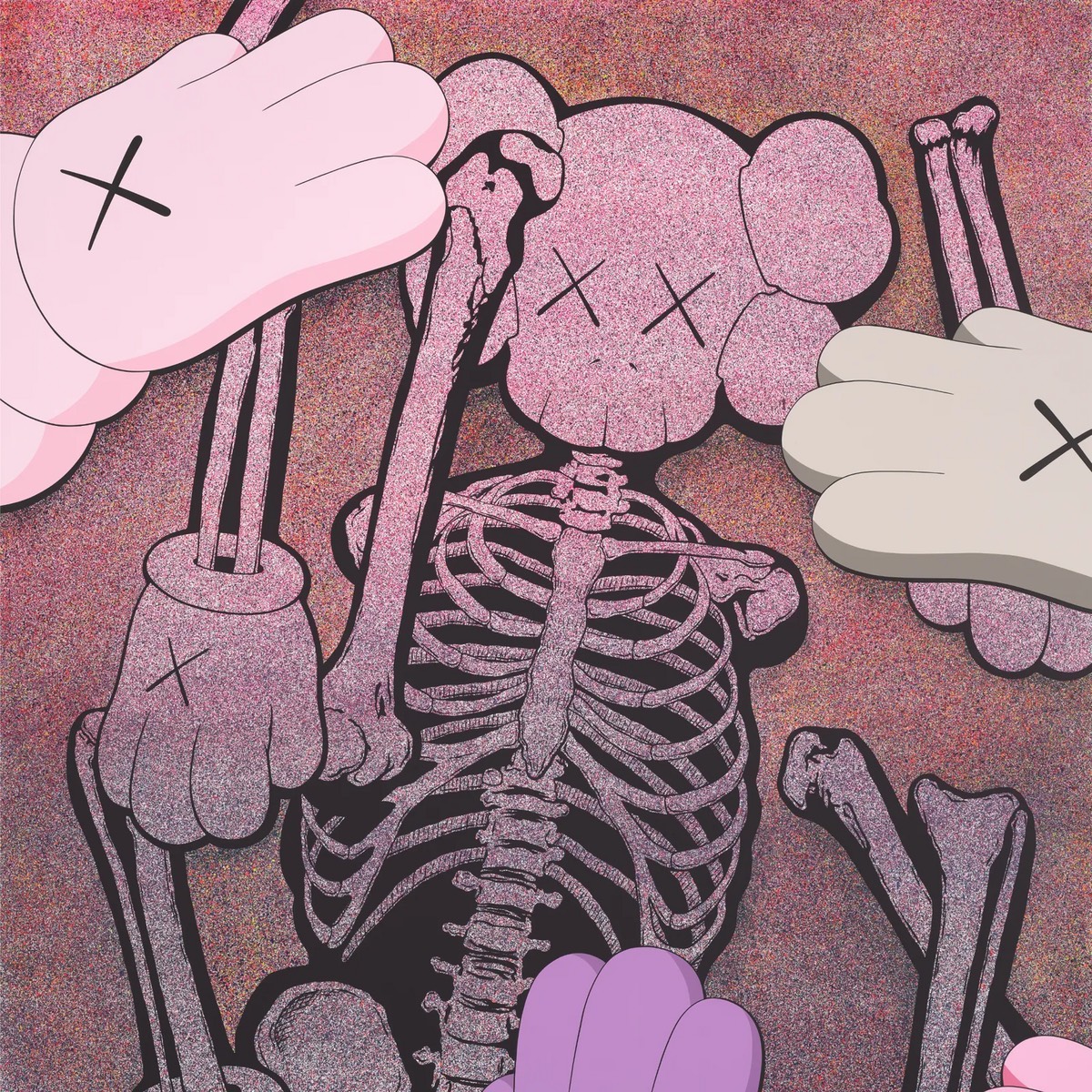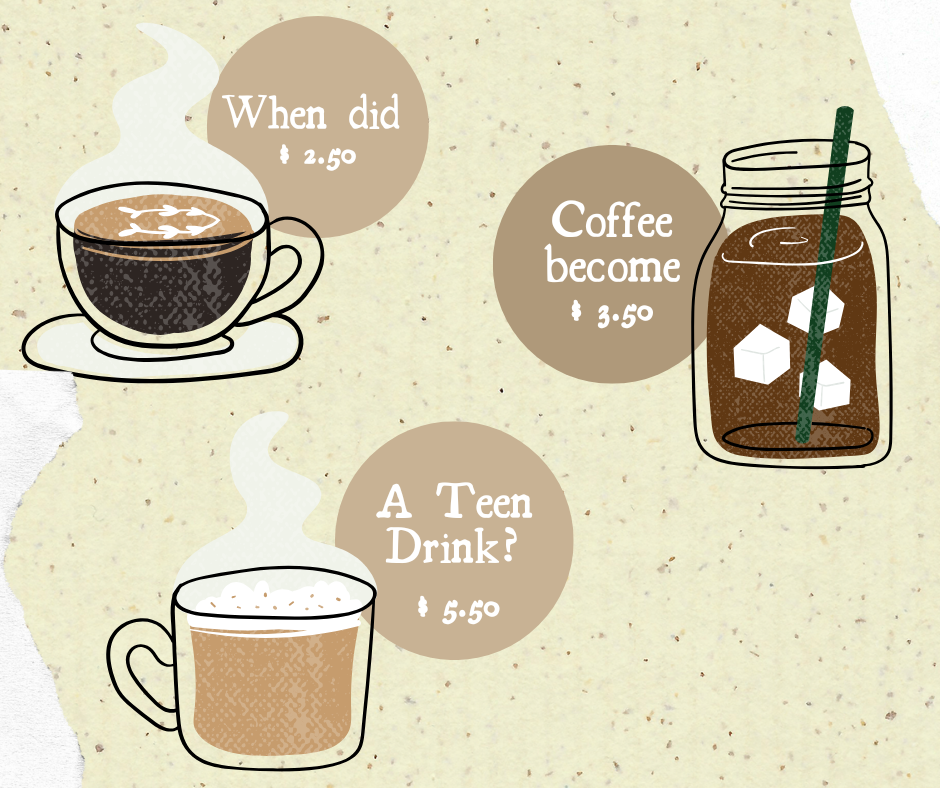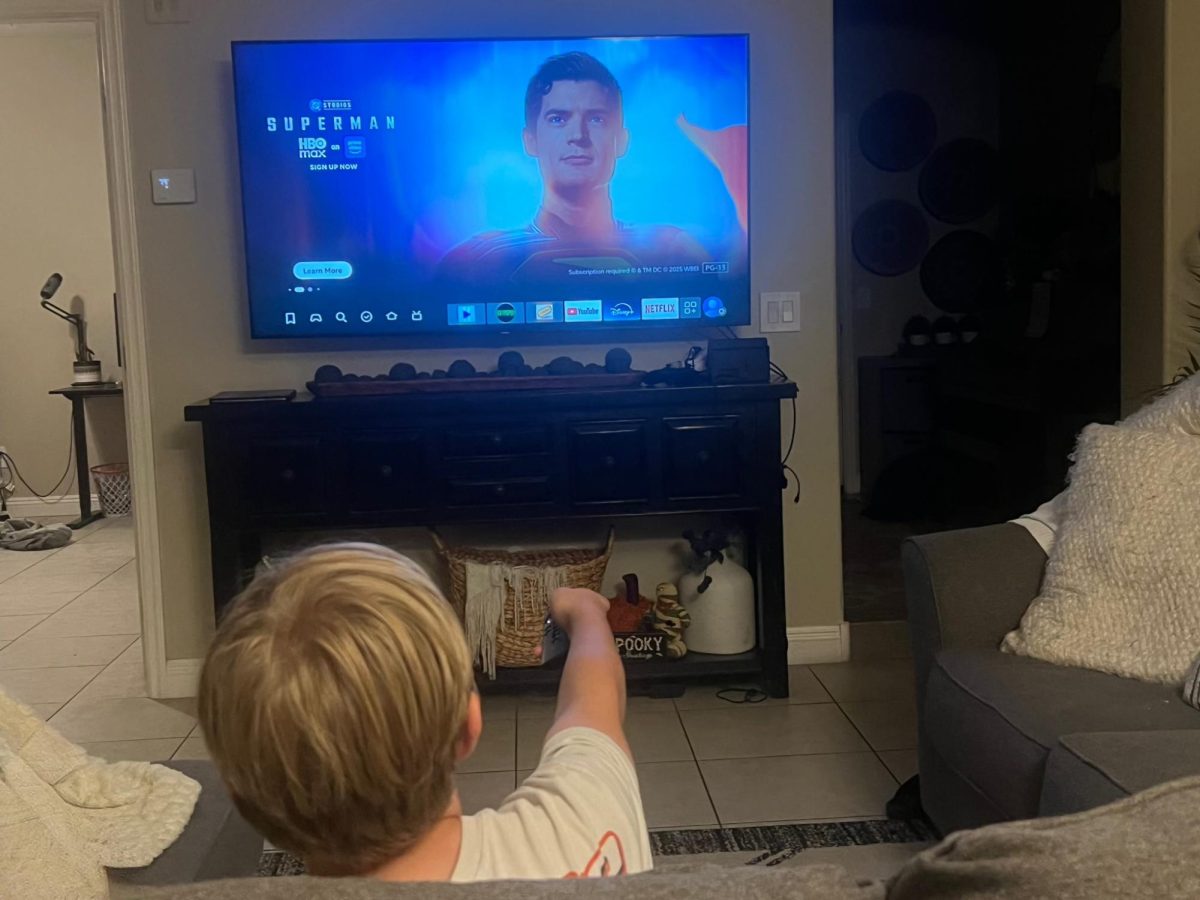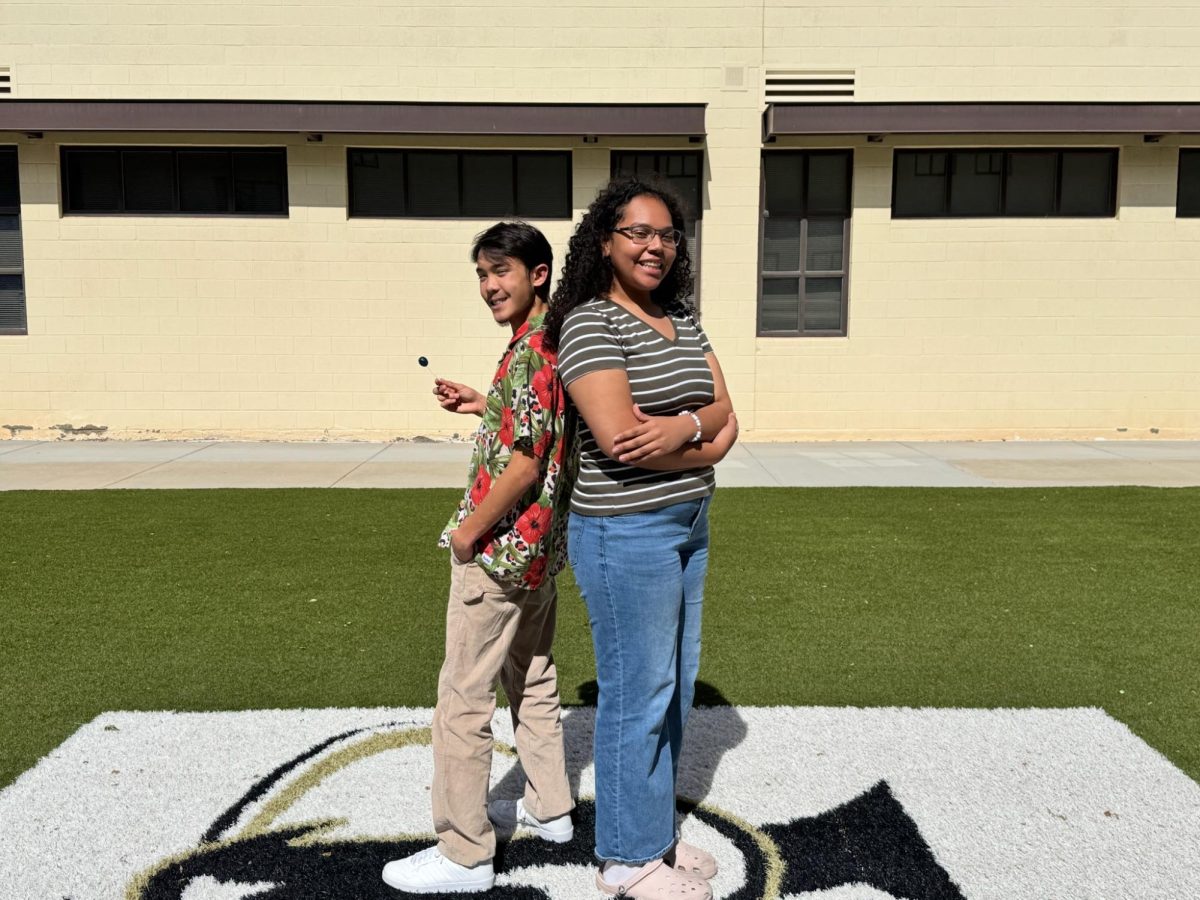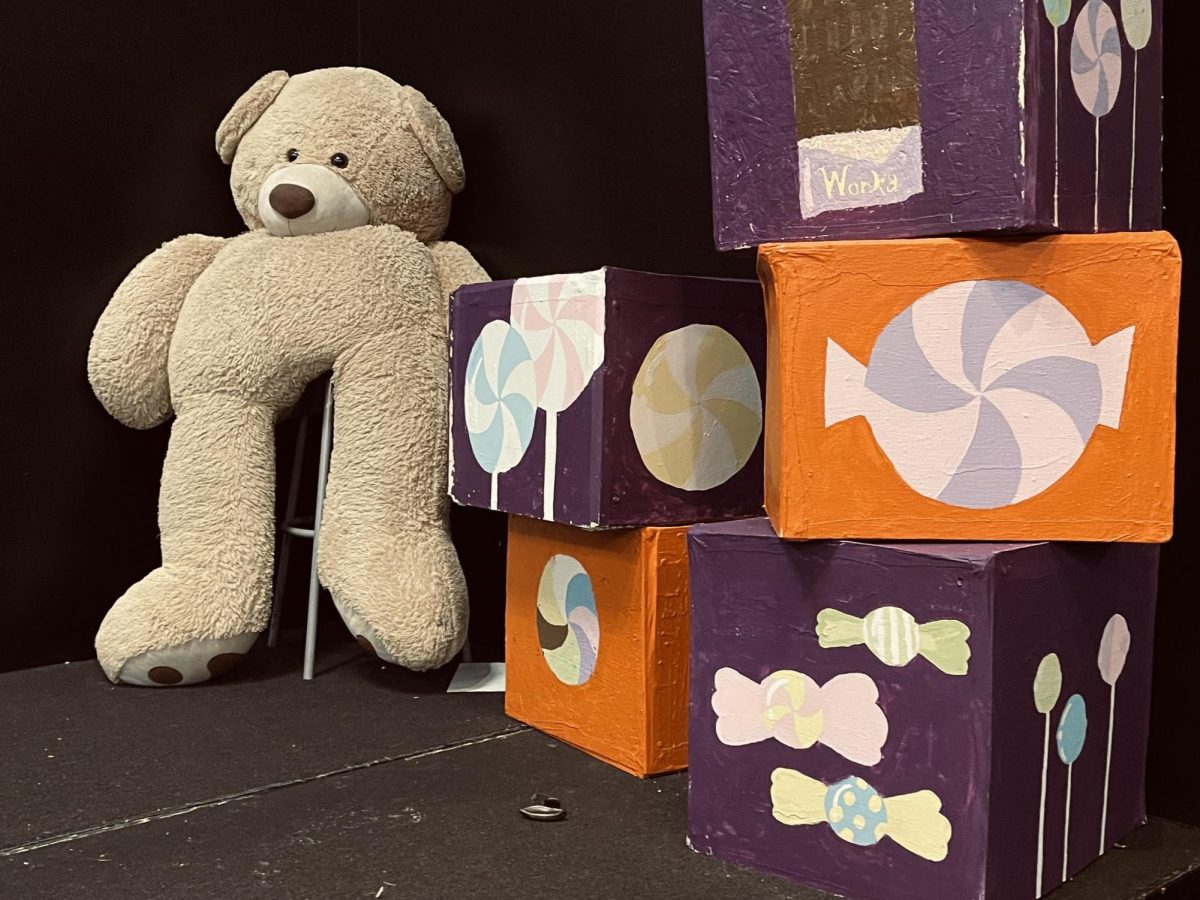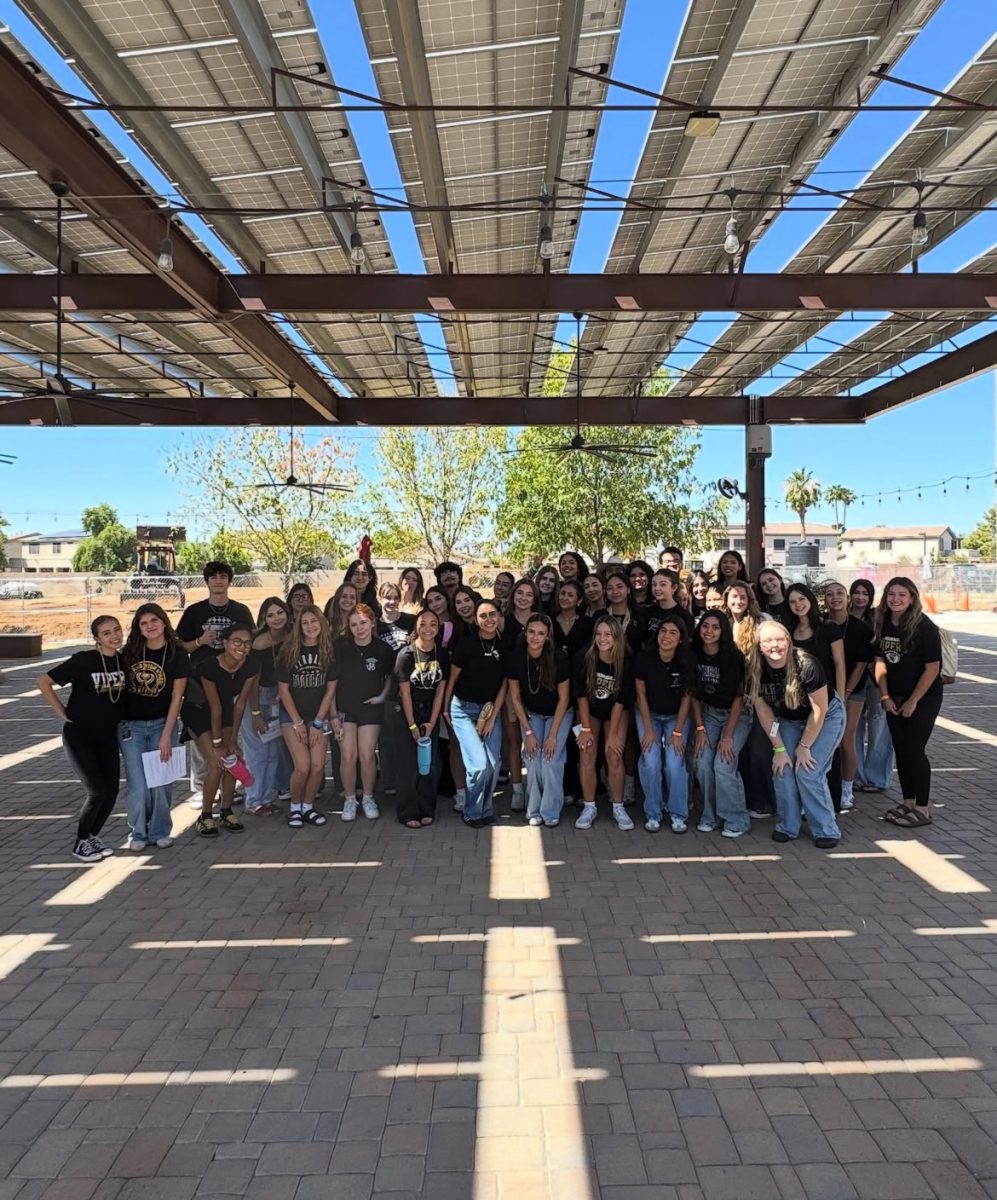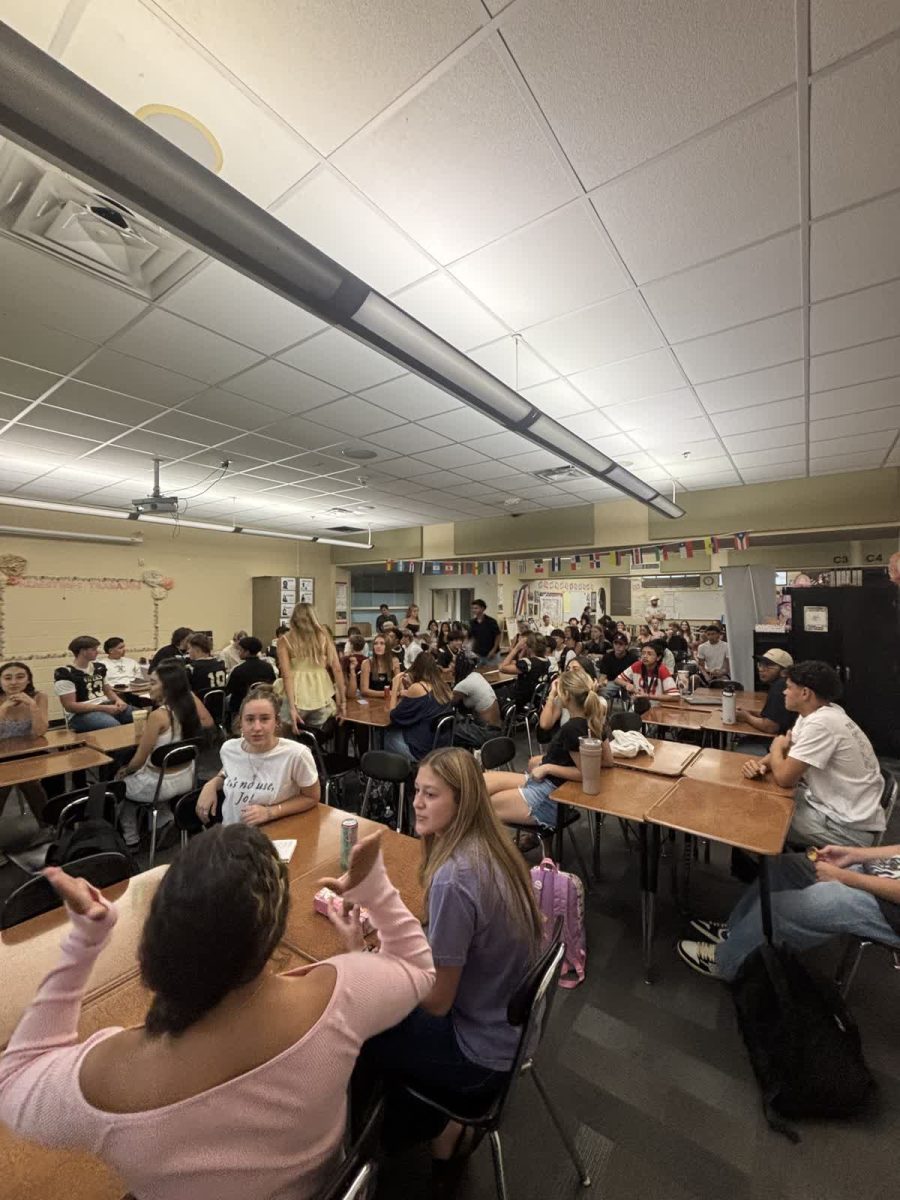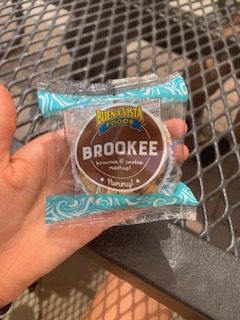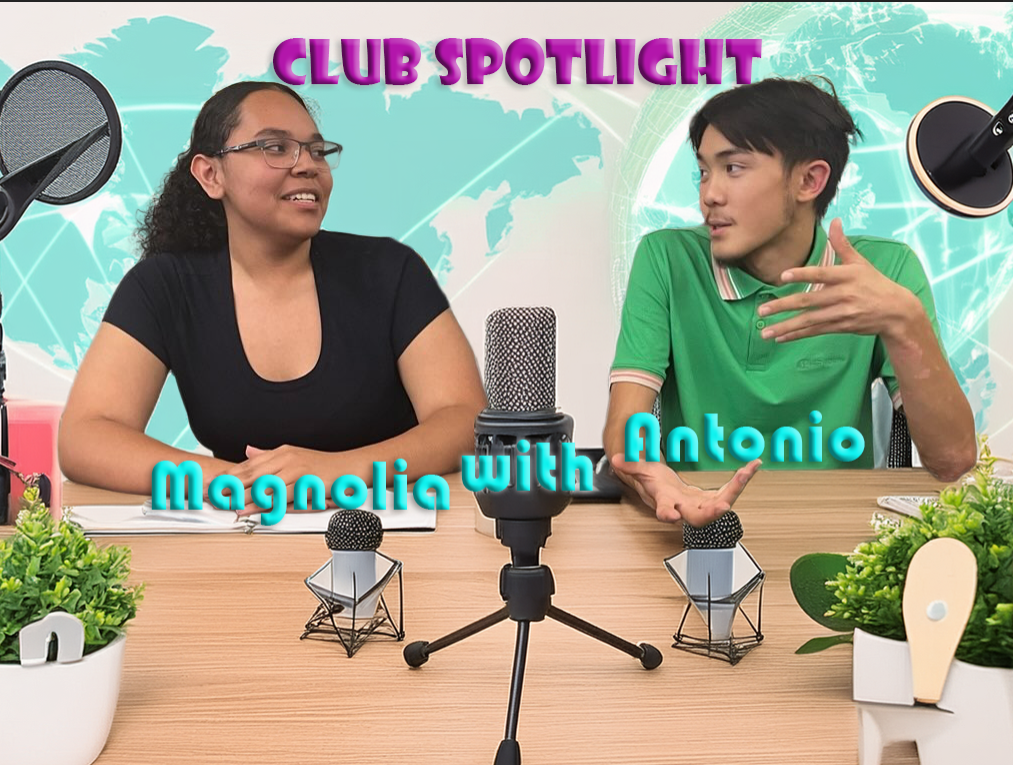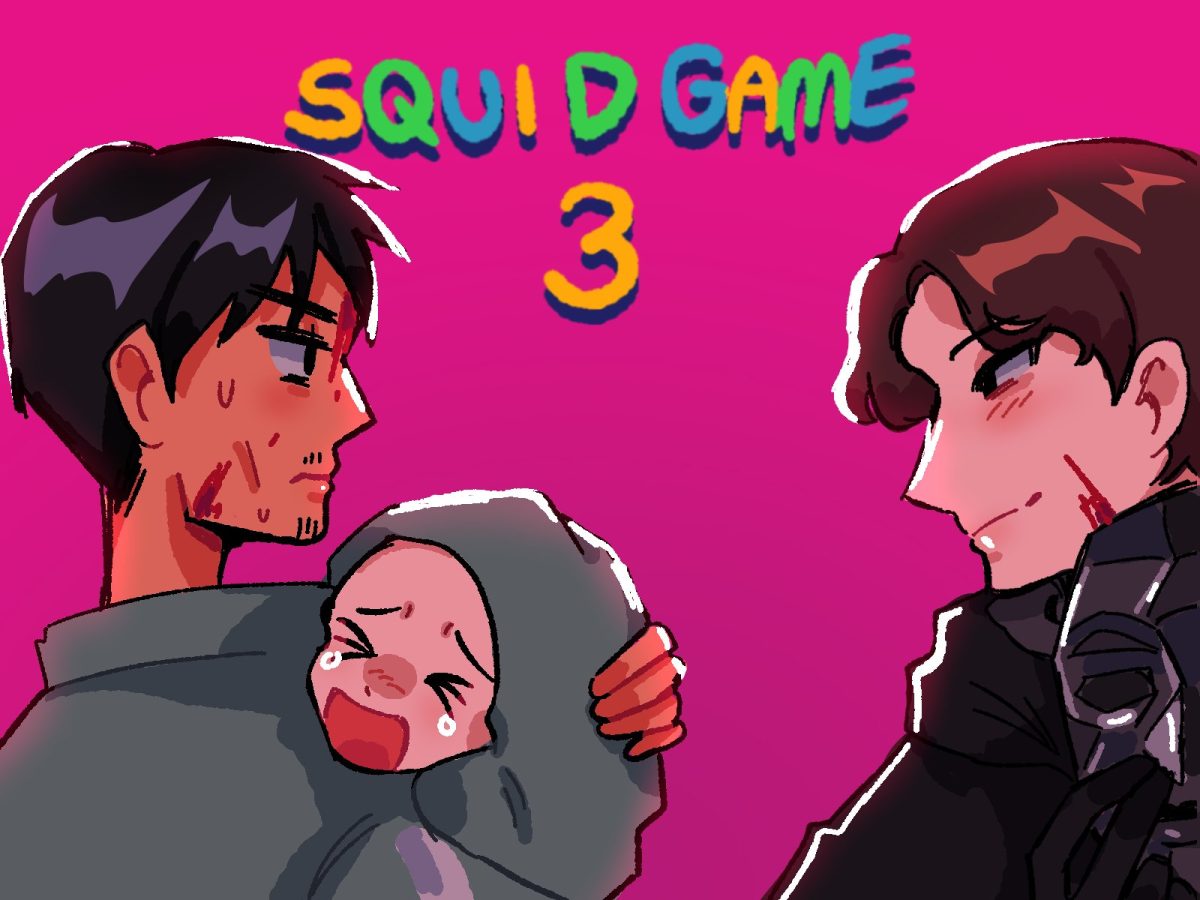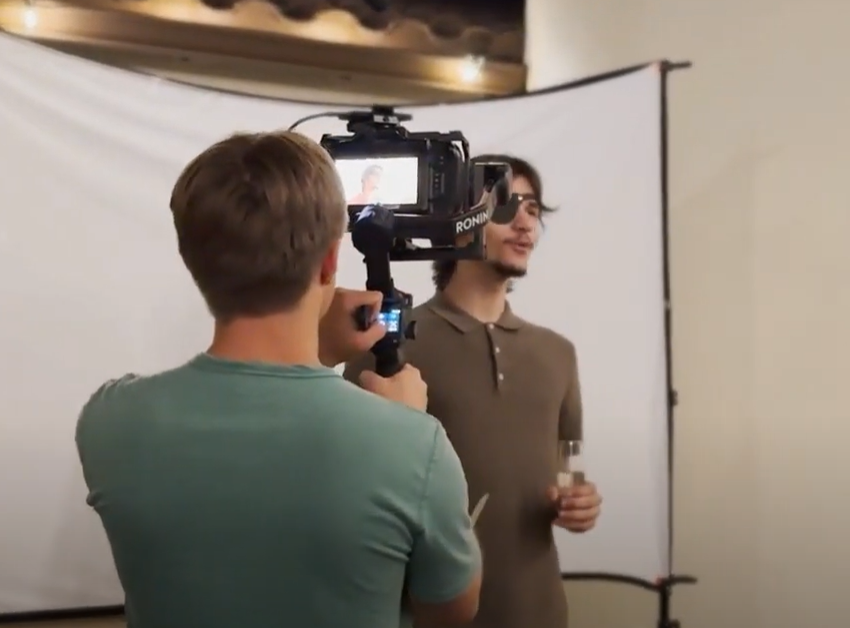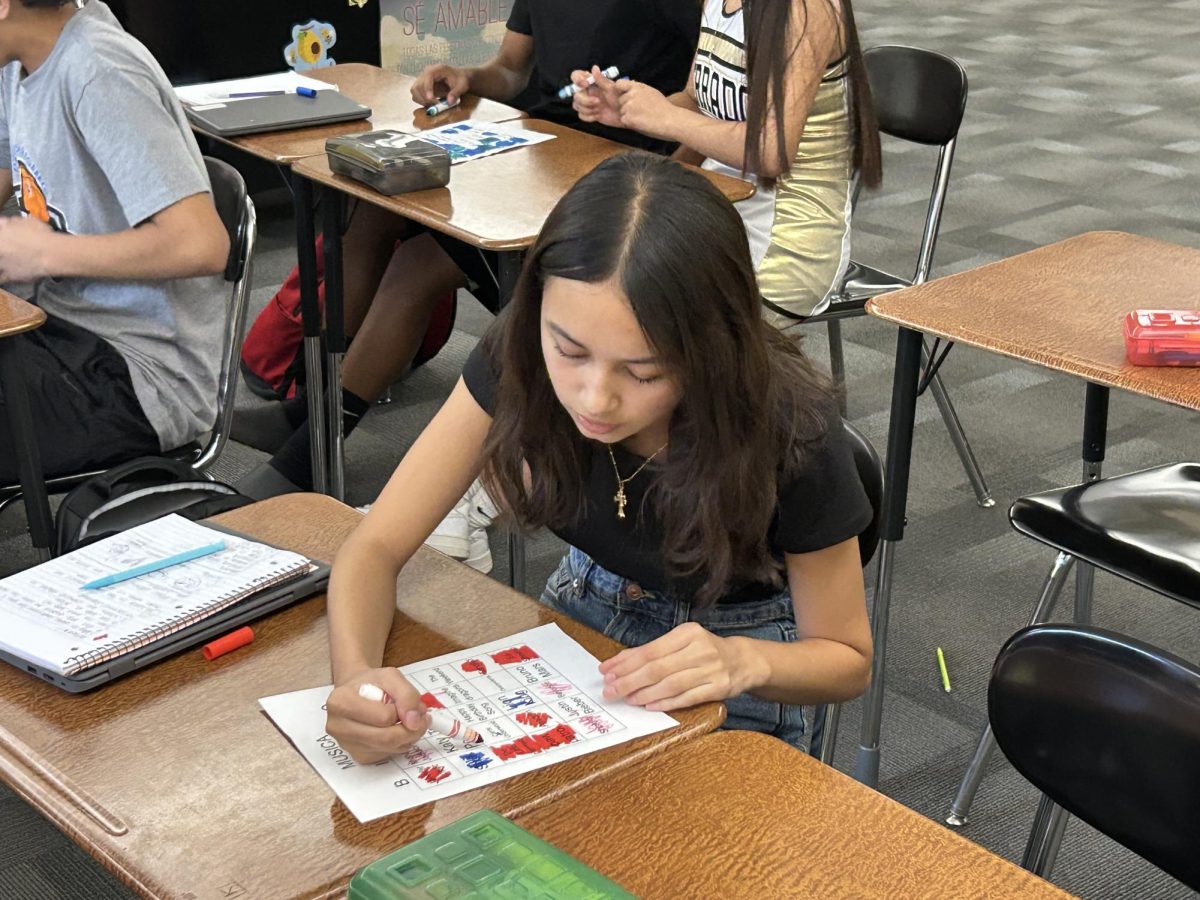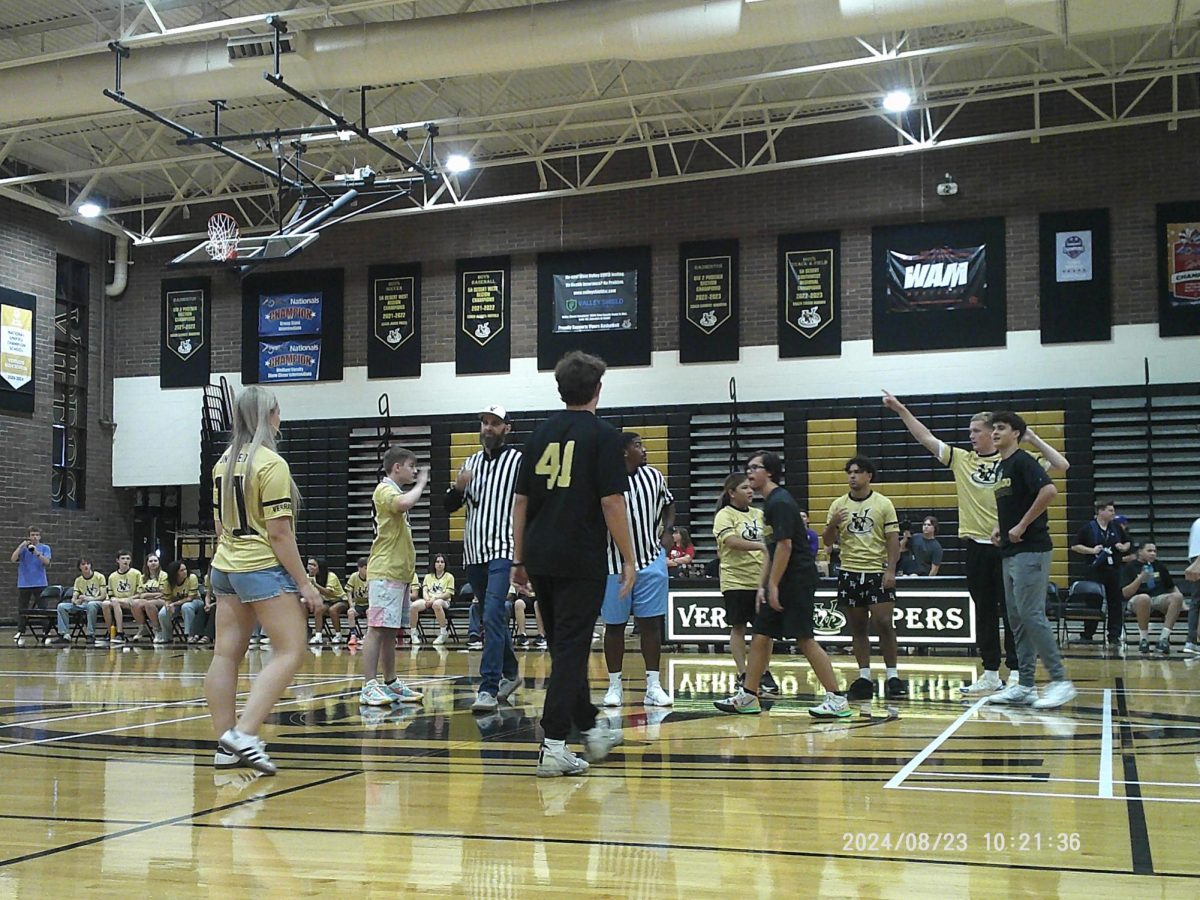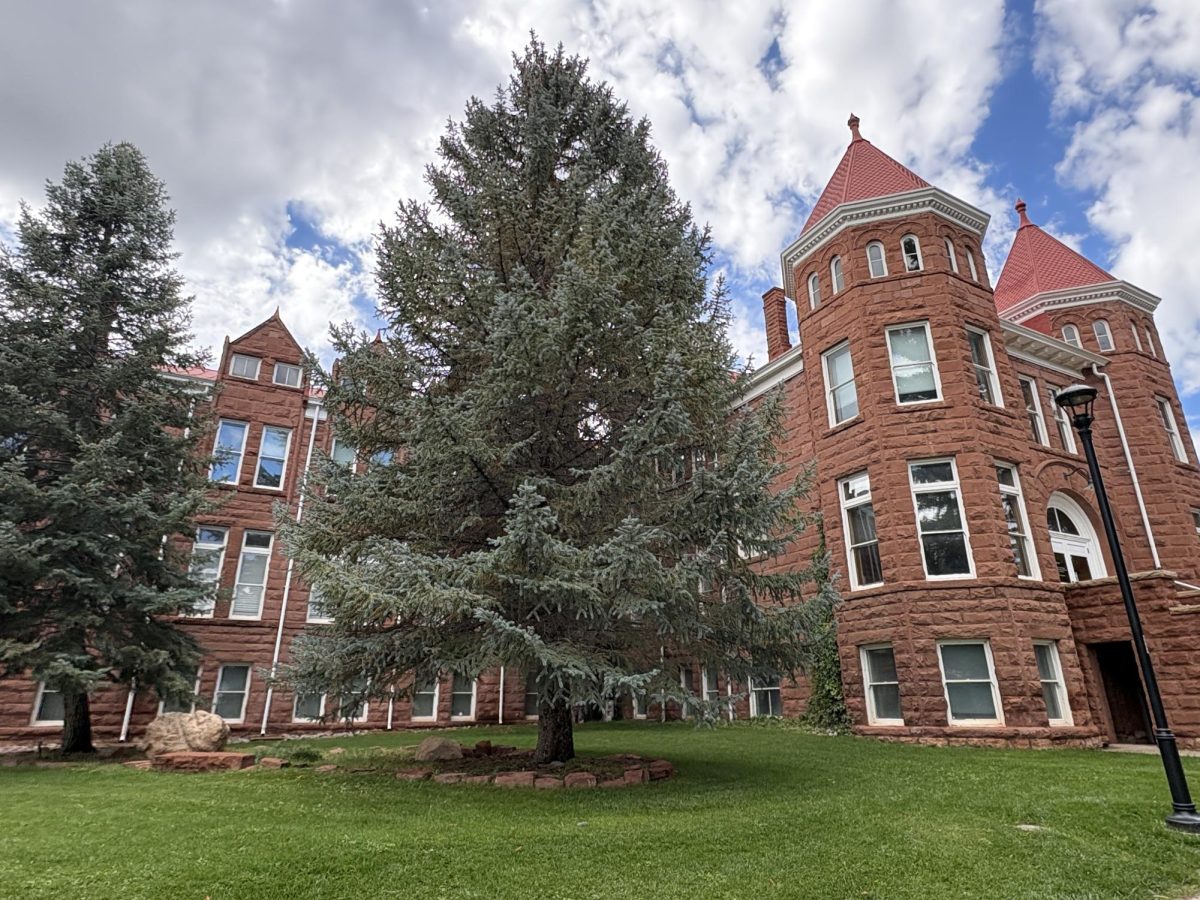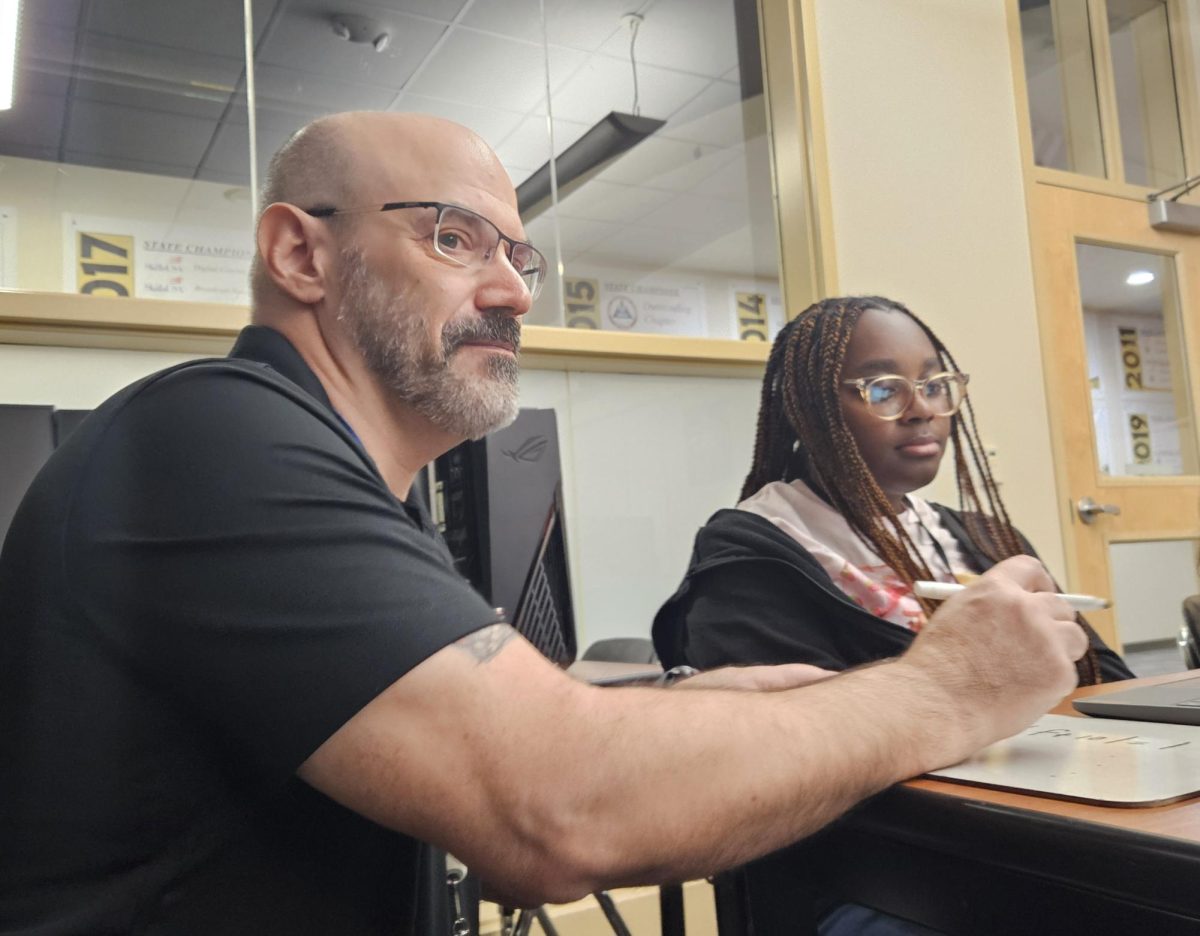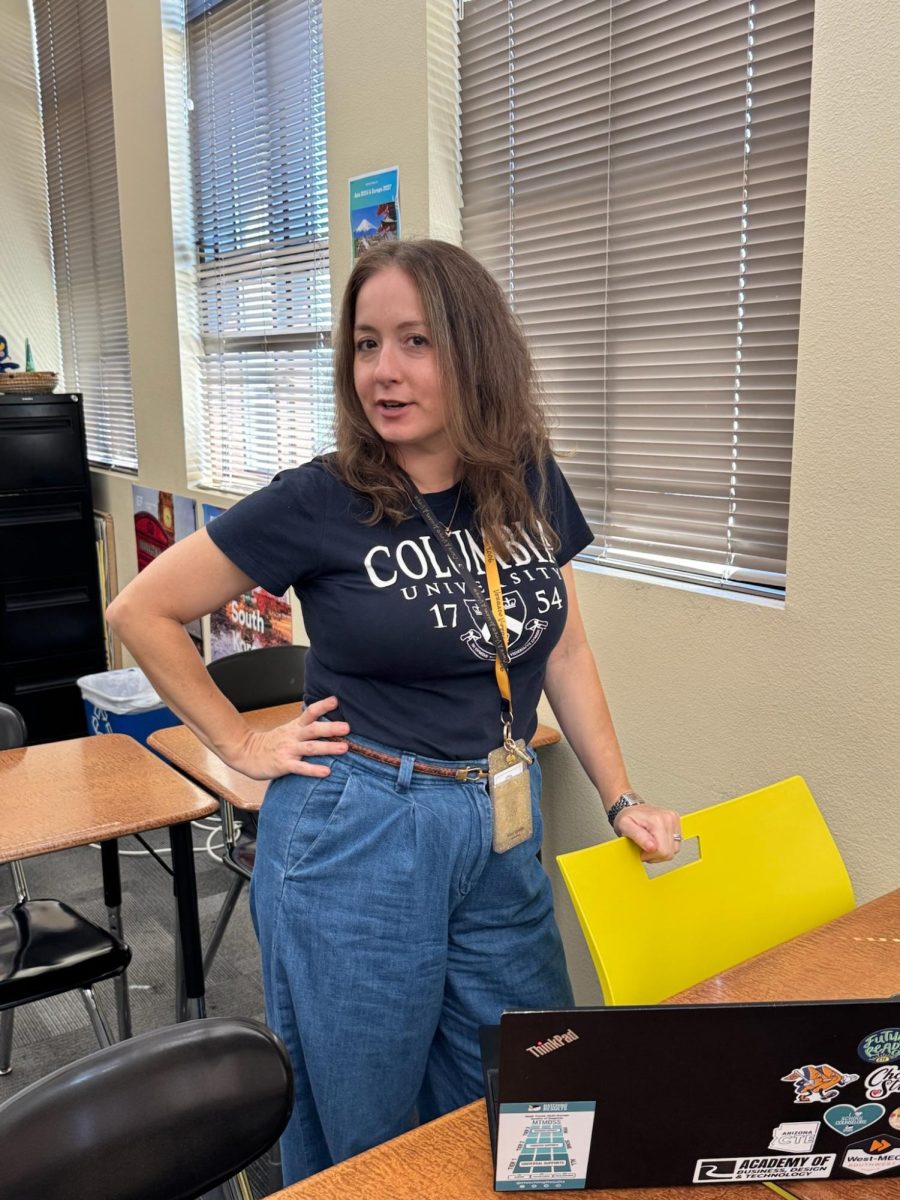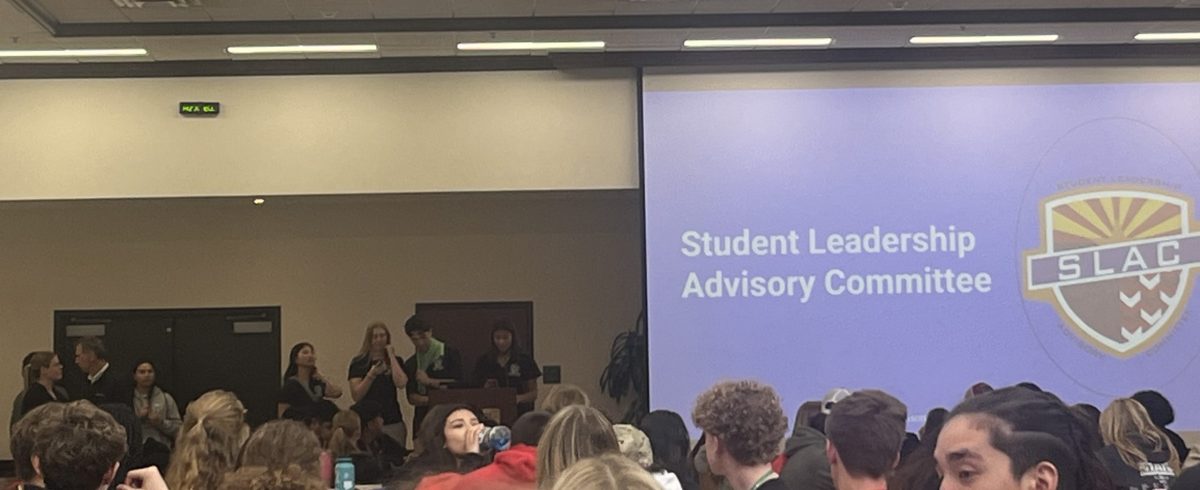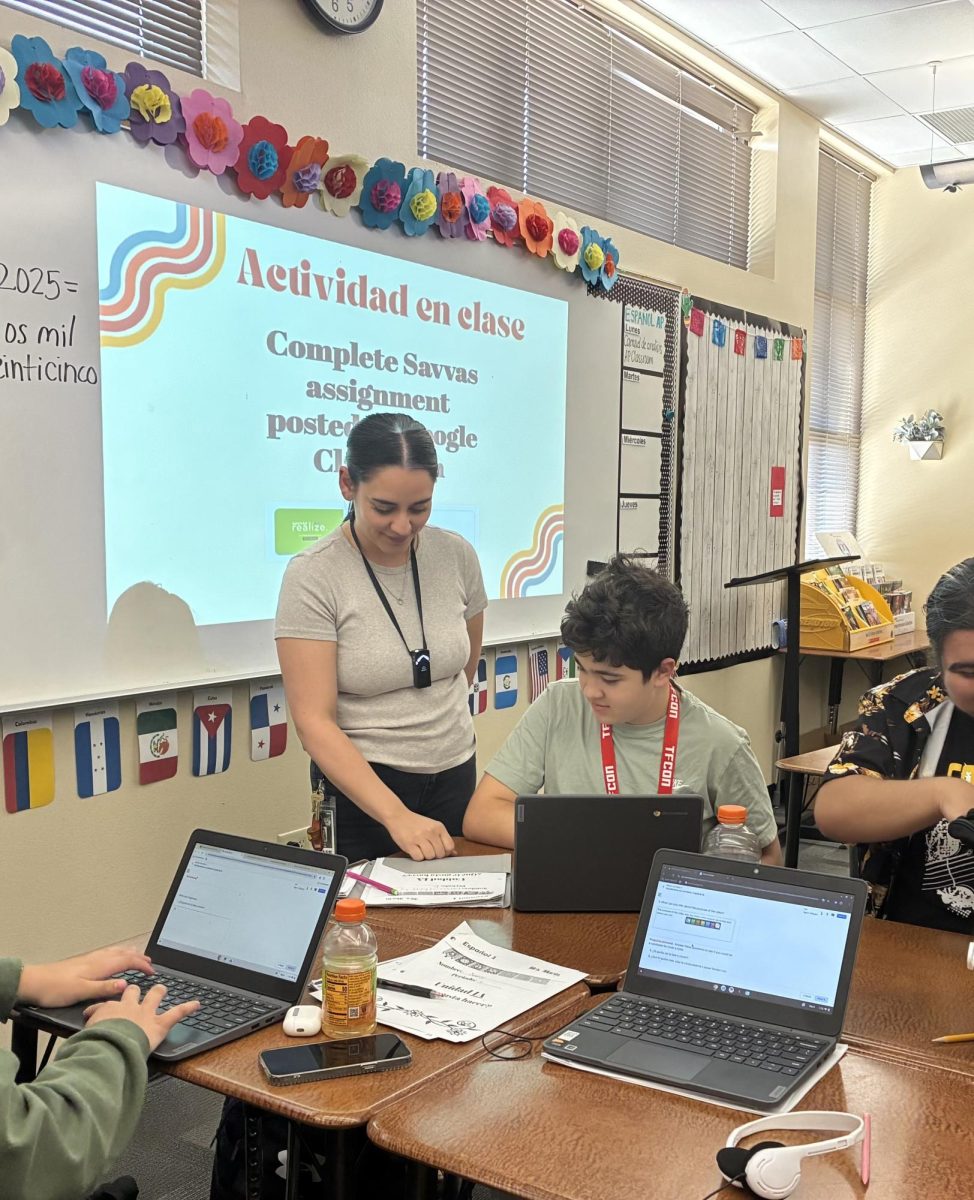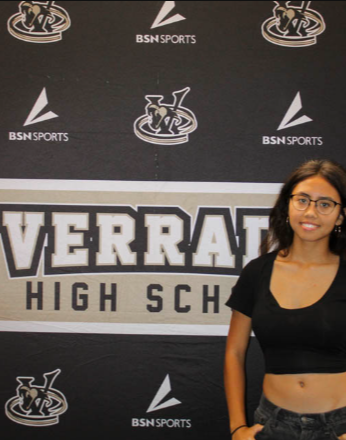April 1st was this year’s AIA Athletic Director & Student Leadership Summit also known as SLAC, the AIA Student Leadership Advisory Committee. To clear it out of the way, nobody there was a slacker! All schools in Arizona went to this, their athletic directors and around four student-athletes joined them. This event was hosted at Xavier College Preparatory! The event was almost a full school day, going from 8:15 am to 2:45 pm.
Athletes were separated from their directors and made their way to the founder hall. They received a colored lanyard to determine what group they were in out of the five, along with souvenirs such as a shirt with the SLAC logo, and a bag. Students found seats and the meeting began. The head students of SLACS from different high schools talked about how the student-athletes were there to gain more knowledge about how to better their athletic programs and the school’s environment in general.
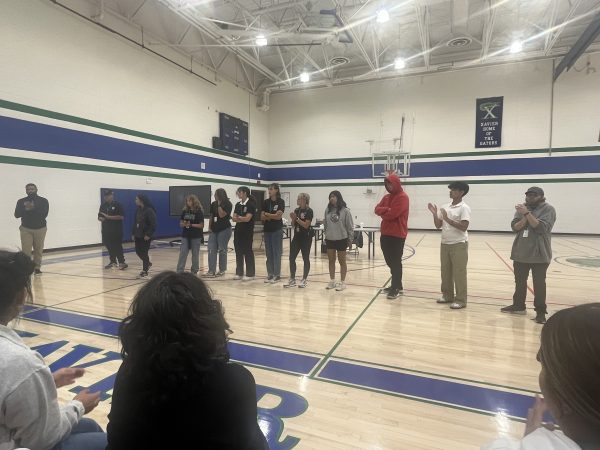
Students were given a pamphlet about rotations that would be happening. There was five breakout sessions of 50 minutes each. Individual groups would be going through them but just in a different order, but not without an icebreaker first to start the day! The SLAC heads made the students walk around and meet new people. Saying the three C’s, an athlete’s favorite color, cartoon, and candy. Just so the players felt more comfortable with one another.
Afterward, the different colored groups split up. In no particular order, a rotation had students watch school spirit videos in the Grubb hall. The videos consisted of how to show each respective school’s spirit. The brackets were divided by school size, such as 1A being one group and 5A being another one. The group voted the best on the AZprep live website. The main focus of this rotation was to show different ways schools can show their pride and how to get people more excited to be individuals in their schools.
In the Founder A & B rooms were longtime officials in their respective sports. Jake Gustafson, Mark Panepinto, Jeff Barker, and Rob Mckinley have 95 years of experience combined. They talk about how hard it is to call some plays and how good referees must be while under pressure. With how fast plays happen, the amount of rules they must memorize and all the other factors that go into sports matches cause them to get yelled at. They are on their own time and not a lot of people remember that games can’t happen without the referees. Mark says, “People need to realize that we are trying our best to judge the plays, we are humans too and I think sometimes people forget that.”
They also say the pros of starting refereeing, being on their own schedules by being able to pick what games they referee and the decent amount of payment received from just doing one or two games. However, they do explain the current refereeing shortage, hoping they inspire the youth to start refereeing if they don’t or can’t play anymore but still want to be involved in their sport. They hope to spread their words about the career of refereeing or just to be more kind to officials in games.
After this, the groups met back together at Founders Hall for lunch. They were served catering from Rudy’s Real Texas BAR-B-Q, one of the many sponsors of SLAC. During the lunch, they also shouted and thanked all the speakers at the meet giving them the recognition they deserved for all the wonderful information they shared that day.
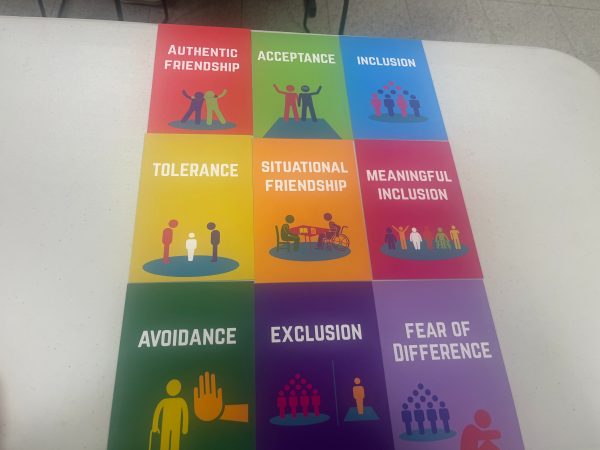
One rotation was all about unified sports. This took place in both the Luffy Hall and Main Gym. In the Luffy Hall, the students met with Jeff Wooten and other SLAC students. Jeff is a consultant for Special Olympics. He works with SOAZ Unified Champion Schools to support and build unified sports programs. He used cards called the “Inclusion Game” to help people better understand the right way to treat people with disabilities. Discussing how others may feel they are treating people with disabilities well but in hindsight, they really aren’t.
The students did a number of exercises. First, they were told to organize the cards given without providing much guidance other than that. The words or phrases were as follows: acceptance, avoidance, exclusion, fear of exclusion, meaningful inclusion, situational friendship, and tolerance. The two main types of ways the student-athletes organized were to rank the worst word to the best word in the deck or to split the cards in negative and positive word groups. This was to see the way students perceive the words.
The next activity was to pick two cards, one that represents what they see in their school, versus what they want to see with another card. Unfortunately, students picked cards like tolerance, exclusion, and avoidance. Jeff Wooten says, “I think things may be doing well in schools but when students do this and say otherwise, it hurts for me to see because that means something needs to change.”
Most people don’t treat disabled people as regular humans which shouldn’t be the case. They are just wired a little differently than what people perceive as “normal”. The purpose of this class session was to understand the ways people with disabilities are treated in the world and how to better bond with them, as well as to include and treat them like they would with anyone else.
The second part of this rotation was playing unified sports in the gym with Coach Heidi Dorn to organize the drills and games. The students played with a group of other students with disabilities. They played pool noodle hockey together as a unit, unlike the way where people without disabilities sometimes exclude disabled people by not passing or communicating with them on the playing field. This exercise was to practice actual inclusion in games instead of the fake kind of exclusion most people with disabilities get, with it being thought it is enough to just put them in the games but have them do nothing.
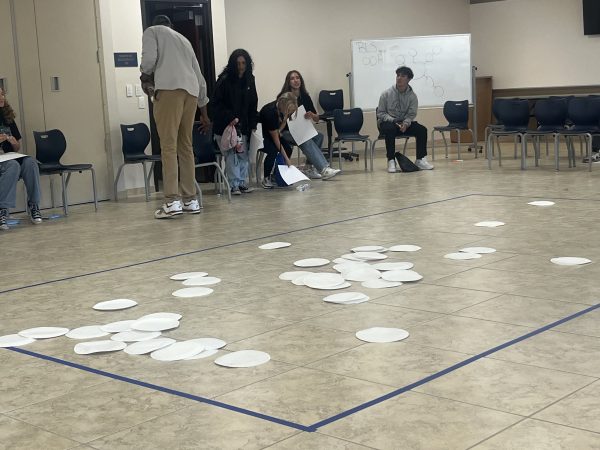
Servant Leaders was the topic of the next session. “Servant” means they are guiding others to success and growing their sports group as a whole. The speakers in this exercise were Vice President of Government Affairs Amilyn Pierce for the Dbacks and the Assistant Coach of Ottawa University, Dra Rogers. In the Vester Hall, they ask the groups to get into smaller groups of 5 to 7. Then the students were asked to discuss what attributes a servant leader has. One discussion was over a representative of each group talking about what they believed being a servant leader meant. The gist of what was said is that they must have their heart in it, be kind, honest when needed, and have an overall positive attitude. The purpose was to discover qualities that athletes want to see in their teammates. Even if the athletes aren’t captains, they can still be examples.
The final session of the list is future planning with Omari Pearson in the Post 1 & 2 room. He was realistic with every group and told them to think about the hard questions of choices a student will have to make. A lot of school questions such as what college, job, and salary, a student would like. They were given a pen and paper to plan it out. Expecting they weren’t planning for themselves, they planned their partners’ lives that they were paired up with. The pairs helped find out what the other wanted to do in life, a list of colleges they were interested in, the GPA the person must have in order to go to those colleges, and more. Pearson mentored everyone and told many stories about his life, plus his predecessors. The session gave the athletes a better idea of what they want and how to help others find their callings too.
After the groups went through all the breakout sessions, they went back to the Founders Hall where it all began. Here, many things were discussed; the closing notes about thanking all the students for coming here, all the wonderful people who made it happen, how to become a SLAC member, and how they hope they would pass on this information to their own schools to better them as a whole, and to maybe change some views and mindsets of Vipers.

